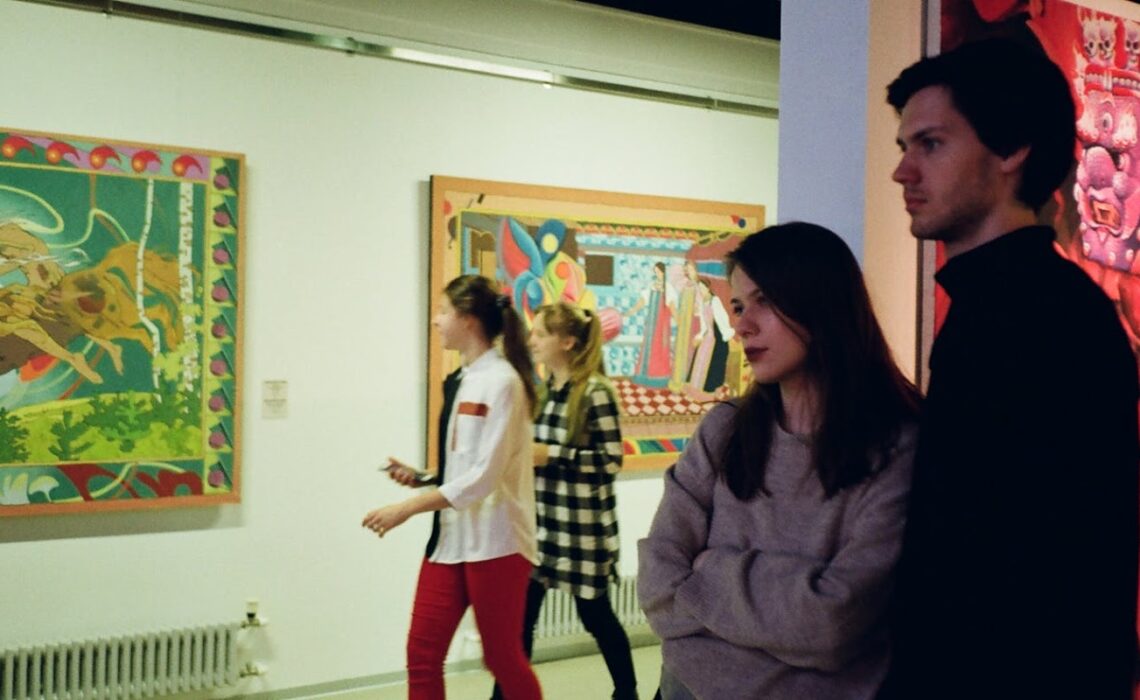
Through its many forms, art has the ability to unite people from different backgrounds by bridging linguistic and cultural divides. However, due to communication barriers, experiencing the arts can be difficult for those who are deaf or hard of hearing. Thankfully, technological developments are transforming the provision of interpretation services, increasing accessibility to the arts for all. This article will examine how technology is affecting interpreting for the arts, with a particular emphasis on how digital tools are facilitating better access for people who are deaf or hard of hearing to performances and exhibitions.
Introduction to Interpreting in the Arts
Communicating the meaning and spirit of shows, concerts, and other artistic gatherings to people who are hard of hearing or deaf is known as interpreting in the arts.
This can involve giving descriptions of visual components like gestures, facial expressions, and set designs in addition to interpreting spoken dialogue, music, and other auditory elements.
Interpreters who are proficient in sign language have historically been employed to help performers and audience members communicate. Even though these interpreters are very important, not every performance or exhibition can use them or they are not always practical. Furthermore, using human interpreters exclusively can be expensive and may not always be able to accommodate each person’s unique needs.
The Role of Technology in Improving Access
Deaf and hard-of-hearing people’s access to the arts is becoming better thanks in large part to digital tools. These technologies make use of developments in augmented reality, machine learning, and speech recognition to offer more precise and adaptable interpretation services. The following are a few major ways that technology is influencing society:
1. Real-time Captioning and Subtitling
Using real-time captioning and subtitling technology is one of the biggest innovations in recent years. With the use of this technology, spoken dialogue and song lyrics can be swiftly converted into text and presented for audience reading on screens or other devices. In situations where traditional sign language interpretation may not be possible, live performances benefit greatly from real-time captioning and subtitling.
2. Mobile Apps and Devices
Photo by Lisa Fotios
Enhancing access to the arts is also largely being facilitated by mobile devices and apps. In addition to extra features like audio descriptions and augmented reality overlays, these apps can offer real-time captioning and subtitling.
The ability to access these services via smartphones or tablets offers audience members more flexibility and control over their viewing experience.
3. Remote Interpretation Services
The use of remote interpretation services, in which interpreters offer their services via video conferencing platforms, is another innovative development. This enables more scheduling flexibility for interpreters and can assist in lowering travel and lodging expenses. A diverse audience can have even greater access to the arts by using remote interpretation services, which can also be used to provide interpretation in multiple languages.
4. Augmented Reality (AR) and Virtual Reality (VR)
Additionally, deaf and hard of hearing people’s interpretive experiences are being improved through the use of AR and VR technologies. Together with real-time captioning and audio descriptions, these technologies can produce immersive visualizations of shows and exhibitions.
Additionally, interactive experiences that let users interact and explore artistic content in fresh and creative ways can be made with AR and VR.
5. Machine Translation and Voice Recognition
Increased accessibility to the arts is also being facilitated by developments in voice recognition and machine translation. The ability of these technologies to translate text and spoken dialogue between languages quickly opens up new audiences for performances and exhibitions. Real-time captioning and subtitling services can also be rendered more accurately with the use of voice recognition technology.
Case Studies: Examples of Technology in Action
1. National Theatre Live
A program called National Theatre Live streams live performances from London’s National Theatre to theaters all over the world. The program makes accessible screenings for audiences who are hard of hearing or deaf possible by utilizing real-time captioning and subtitling technologies. No matter where they are, audience members can experience the same top-notch theatrical production as those who are hearing thanks to technology.
2. The Museum of Modern Art (MoMA)
A mobile app that offers augmented reality overlays and audio descriptions for specific artworks in the collection has been implemented by MoMA in New York City. Using the app, visitors can get more details about the artworks, such as explanations of specific visual components and analyses of the artist’s intentions. Everyone who visits the museum benefits from this technology, even the hard of hearing and deaf visitors.
Conclusion
Access to the arts is being made easier for those who are hard of hearing and deaf thanks in large part to technology.
A few instances of how digital tools are transforming interpreting in the arts include machine translation, augmented reality, remote interpretation services, smartphone apps and devices, real-time captioning and subtitling, and more.
These developments improve the overall experience for all audience members in addition to making the arts more accessible.
We may anticipate even more advancements in interpreting services as technology develops, which will further improve the accessibility and inclusivity of the arts for all.
For those who are looking for additional support, Unspoken Language Services offers interpreting services to help bridge the communication gap between the deaf and hearing communities.
Photo Credit to: Photo by Darya Sannikova

